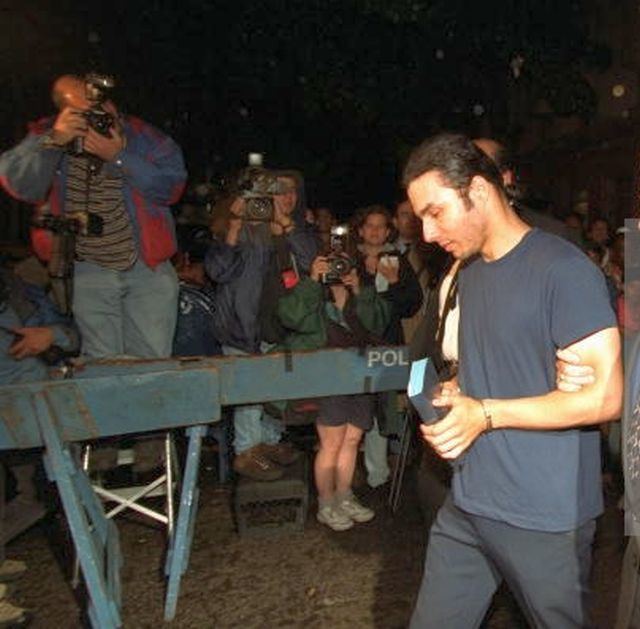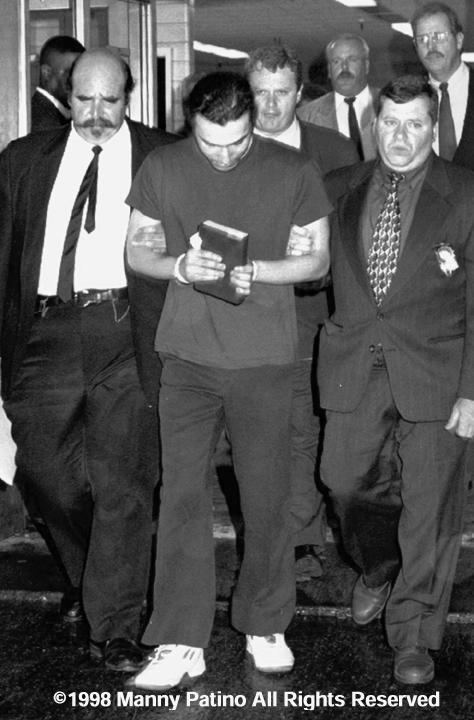Victims 3 killed, 6 wounded | Name Heriberto Seda Date apprehended June 18, 1996 | |
 | ||
Span of killings March 8, 1990–October 2, 1993 Similar Gustavo Julian Garcia , Oba Chandler , Rosie Alfaro | ||
Detienen a heriberto seda sin imaginar que el era el asesino de zodiaco
Heriberto "Eddie" Seda (born July 31, 1967) is an American serial killer who struck New York City from 1990 to 1993. Before being caught on June 18, 1996, Seda killed three people and wounded five others (four critically). Seda is believed to have admired San Francisco’s Zodiac Killer for avoiding capture. Police described Seda, a Brooklyn resident, as a recluse obsessed with guns and the Bible. Seda was formally charged in the case on June 21, 1996, convicted in 1998, and sentenced to 232 years imprisonment.
Contents
- Detienen a heriberto seda sin imaginar que el era el asesino de zodiaco
- Crimes
- Capture
- Investigation and trial
- Personal life
- References

Crimes

Seda attacked people throughout New York City, sending taunting messages to the police and media after each crime. The messages included codes based on International maritime signal flags, which New York Post journalist Keiran Crowley decoded with the assistance of his father-in-law, a veteran of WWII cryptography and signals intelligence.

The killer's letters to police claimed that he was selecting his victims based on their signs of the Zodiac, and implied he would act only at certain times when specific stars were visible in the night sky. Police consulted a professional astronomer, whose predictions about when the killer would strike proved somewhat accurate. He used an improvised firearm, explaining in his messages that the lack of rifling marks on the shells would prevent his capture.
New York police considered the possibility that the notorious Zodiac Killer may have relocated to the East Coast and resumed his crimes after two decades of inactivity. In the late 1960s the Zodiac Killer murdered at least five people and injured another two in the San Francisco area in the late 1960s. He sent taunting letters and coded messages to local media, and was never identified. However, a handwriting analyst and consultation with California authorities ruled out that possibility.
Capture
In March 1994, Seda was arrested for possession of a deadly weapon after police noticed a suspicious bulge in his jacket pocket that concealed one of his zip guns. Police determined that the weapon was not functional, and Seda's public defender managed to get all charges dropped and his arrest record sealed. Seda interpreted this turn of events as an omen, proving that he was beyond consequences.
At 26 years old, Seda was an unemployed high school drop out, living with his mother and half-sister. He had been a good high school student, but was expelled after bringing a starter pistol to school. He had dropped out rather than attend mandatory counseling sessions to be readmitted to school. He was unemployed and supported by his mother, but obtained money by stealing coins from pay phones and vending machines. Seda was mentally and physically abusive to his teenage half-sister, Gladys "Chachi" Reyes. During a confrontation with her and her boyfriend on June 18, 1996, Seda pulled out a weapon and began threatening the couple. While Reyes' boyfriend hid in the bedroom, she tried to escape through the front door, but Seda shot her in the buttocks. Wounded but not incapacitated, she made her way to her neighbor’s apartment where she called the police.
After an hours-long stand-off with the police, Seda gave up his firearms and was arrested.
Investigation and trial
Authorities initially made no connection between Seda's arrest for the family violence incident, and the string of unsolved murders. However, he closed out his handwritten statement about the family incident with a symbol resembling one written on the taunting letters to the police by the unidentified killer.
From here, police focused on Seda as a suspect. Despite the killer's claim that he could never be linked to the crimes due to the lack of rifling on the improvised guns, police were able to use tool-mark evidence to link Seda to the attacks. Fingerprint evidence was also found, and handwriting analysis determined a strong similarity between Seda's statement and the anonymous letters. Most damning, police found Seda's DNA on one of the stamps that had been used to mail a letter to police.
Seda caused repeated disruptions in court, making outbursts and shouting at the judge.
Personal life
In prison, Seda began a romantic affair with Synthia-China Blast, described in media as a "pre-op Latin King" gang member who identifies as female, and is serving a sentence for a gang-related murder. Their relationship garnered attention due to their legal battle to be allowed to marry while incarcerated, and due to Blast's efforts to obtain gender-reassignment surgery.
